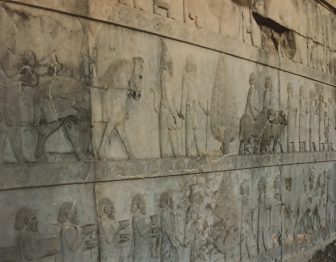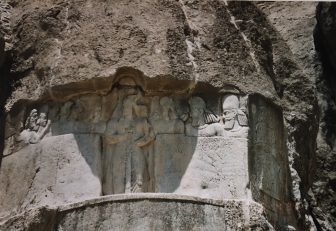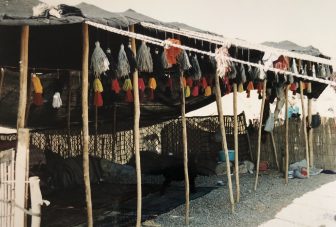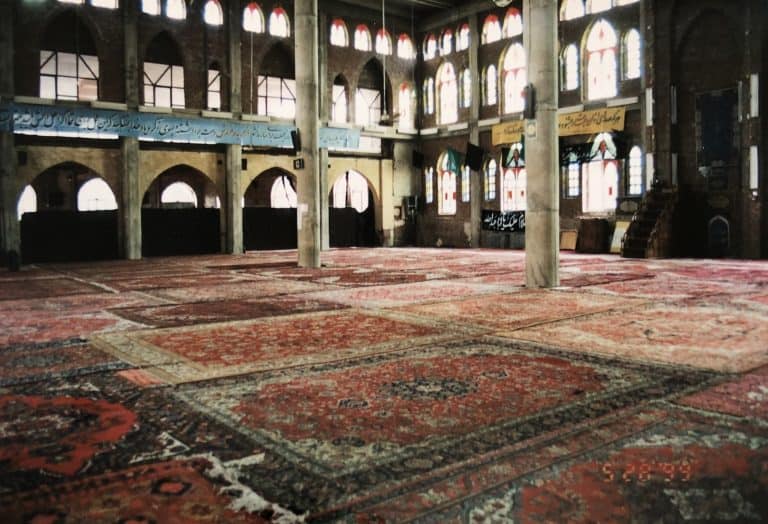
[ May,1999 ] On the day we met Shahsavan people in Iran, we went and stayed in Tabriz, a city not far from the Turkish border.
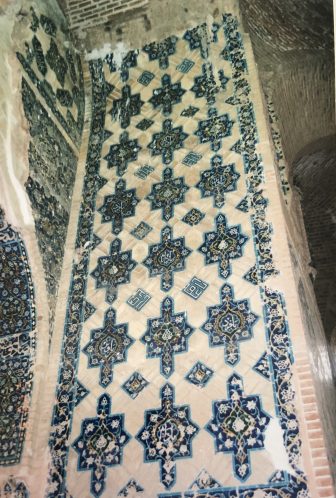
This is another famous place for carpet making and I preferred visiting their bazaar, but because I had headache in the morning, I did not make special requests and followed the original plan to visit Azerbaijan Museum and Blue Mosque.
This area is called East Azerbaijan province and most of the people living here are Azeris.
They speak Azeri language which is nearer to Turkish rather than Persian Farsi apparently.
So Azerbaijan Museum had artifacts excavated from around here in Iran.
As my interest was limited to carpets, I did not get much excited here and moved on to the Blue Mosque.
Although it was called ‘blue’, it was rather earthy colour at a glance.
When I looked at the tiles closely, which were partly left on the wall, I could see that they used to be blue.
This mosque was built in the middle of the 15th century and the reason why it had lost the blue colour was that it was damaged badly by the earthquake in 1779.
After the Blue Mosque, we left Tabriz and moved on to our next destination, Maragheh which is about 130 km south of Tabriz.
Both Khalil, our guide and Ali, our driver said “There is nothing in Maragheh. It is a boring town”.
Anyway, that was our itinerary and after arriving in the town, we had lunch at a hotel restaurant.
Again it was a kind of Kebabs, but some vegetables were wrapped by lamb and nicely grilled, so it was the best meal so far in this holiday.
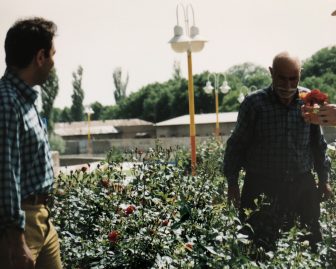
The serious and quiet waiter told the recipe to Khalil.
At this restaurant, a group of people who came in after us were served first and I was not happy about that, but that was because they were the member of the assembly of this province.
After meal, we talked with them a little.
Khalil was making an appeal to them to make better road signs.
One of them tole me that he had been to Shibuya in Tokyo.
In the afternoon, we went around a few places to see in the town with a young man with blue eyes.
Because Khalil was not familiar with this town and the language was different, we needed another guide.
As Khalil and Ali had said, there were not very memorable attractions here.
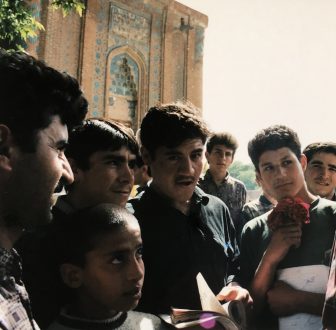
At one point, a gardener gave a rose to my travelling companion.
It was not clear, if he wanted to give it to me through him as in Iran it was difficult for a man to contact directly to a woman, or my companion was particularly liked by the gardener.
Around that area, a group of students surrounded us.
The young people in Iran like football, too and they tried hard to make us understood in their English that Manchester United won a match a few days before and once they knew that I was Japanese, they repeated the name, “Nakata”.
Unfortunately I was not interested in football, so our conversation did not develop from there, but this kind of little communication was more memorable than ruins.
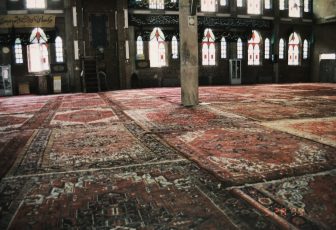
After that we went to the Friday Mosque in this town, which was quite impressive with the lovely carpets covering the huge floor.
I would have loved one to take back home.
There was an old man sitting by the mosque and started talking to us in Russian.
Apparently he had studied in Saint Petersburg when it was Leningrad.
Again, I felt sorry that the conversation did not go further because I could not speak Russian enough.
After leaving Maragheh, we went further down to the south.
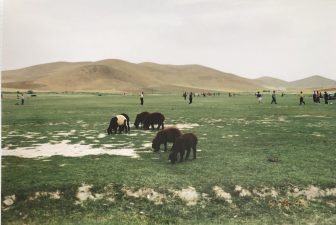
The landscape was dry with some greens, sometimes more and sometimes less.
It was not as magnificent as the day before, but still the view of the highland was lovely.
It seemed that we got into the Kurdish area and the people’s clothes had changed.
Men were wearing scarf wrapping around their heads like turbans and women were wearing Salwar.
The shepherds were black because of the sun and the dust.


